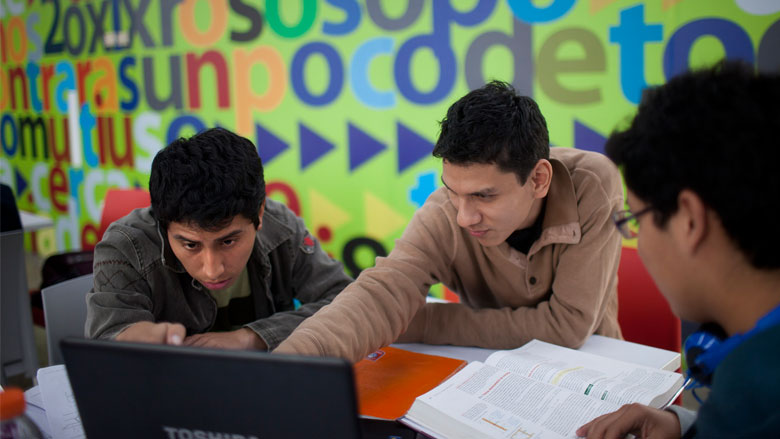As Latin America adapts to the downturn in commodity prices, policymakers are turning to the surest path to sustainable, lasting growth: innovation. “When businesses innovate, productivity increases and economies become more competitive,” says Marialisa Motta, manager of the Trade and Competitiveness practice in Latin America and the Caribbean.
Many Latin American countries have policies to encourage innovation, but most are less efficient or effective than they could be. The World Bank Group is helping governments take stock of their programs and improve them.
The goal, says Senior Private Sector Specialist Alberto Criscuolo, is to see “what is the bang for the buck? Is the public expenditure on innovation consistent with the policy priorities on innovation? How effective are the programs on innovation? Are there overlaps between agencies and ministries? What can we learn from the implementation of existing programs?” These reviews of science, technology, and innovation spending are being done with World Bank Group support in Peru, Colombia, and Chile, among others.
Often, Criscuolo says, there’s a “gap between what industry needs and what universities are researching. The two sides don’t talk to each other.” The World Bank Group assessments can help identify which areas of innovation are in high demand from industry, and encourage funding of that research.
Evaluating the Mix
In Chile, the World Bank Group evaluated the quality of the innovation and entrepreneurship policy mix and worked with two government agencies to identify good practices and weaknesses in design and implementation practices. The results were used to inform the current restructuring of innovation instruments.
In Colombia, the World Bank Group evaluated more than 120 policy instruments, measuring the effectiveness of the policy mix, the degree of redundancies, and gaps. Now the Bank Group is helping the government design a national innovation strategy by recommending good practices on innovation instruments, such as better-defined tax incentives for research and development.
“Fewer than 20 companies in the whole country were benefiting from the tax breaks, mostly large mineral or energy companies,” says Lead Economist Leonardo Iacovone, who worked on the Colombia assessment, after which the country changed its system.
Iacovone is now co-leading a $600 million loan to Colombia, approved in March 2017, whose objectives include strengthening innovation policies.
Management as Well as Technology
Innovation is about management as much as technology, Iacovone points out. “A company that’s able to innovate is one that’s able to learn. The way you get organized and managed is crucial in the way you’re able to learn: Setting and monitoring targets. Linking human resources processes and incentives to targets. Getting feedback from workers on how to continuously improve.”
In Brazil as well, there is much room to improve how firms are managed, says Lead Economist Mark Dutz. Surveys show that 18% of firms are very badly managed, compared to 11% in Mexico, 6% in China, and 2% in the United States, according to the World Management Survey.
But technology is important too. Though some fear that adopting new technologies will kill jobs, Dutz says, “Technology adoption by firms can actually be inclusive, creating more and better jobs not just for highly skilled workers, but also lower-skilled workers – provided there is enough output expansion.”
Traditionally, Latin American economies, particularly Brazil, have been relatively closed to foreign trade, giving companies little incentive to innovate and remain competitive in global markets – and leading to higher prices for consumers. But breaking down those barriers means that companies can expand beyond their traditional domestic markets. “They need to think of the world as their oyster,” Dutz says.


